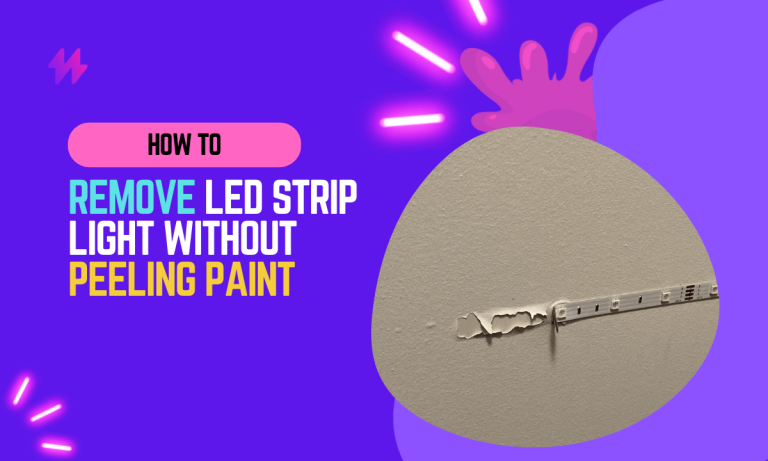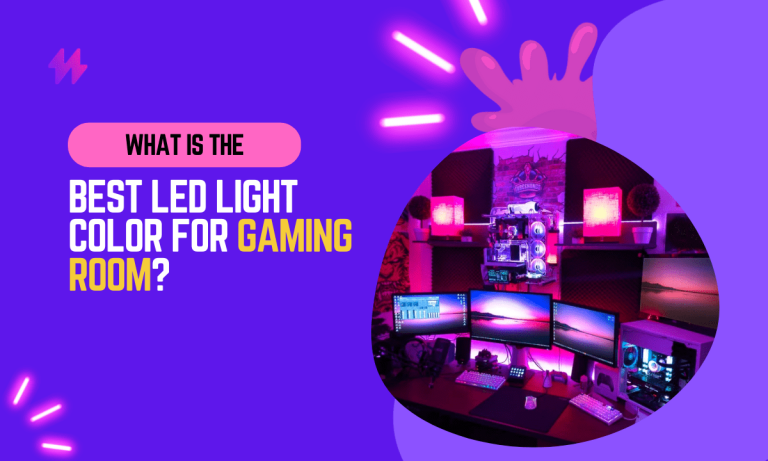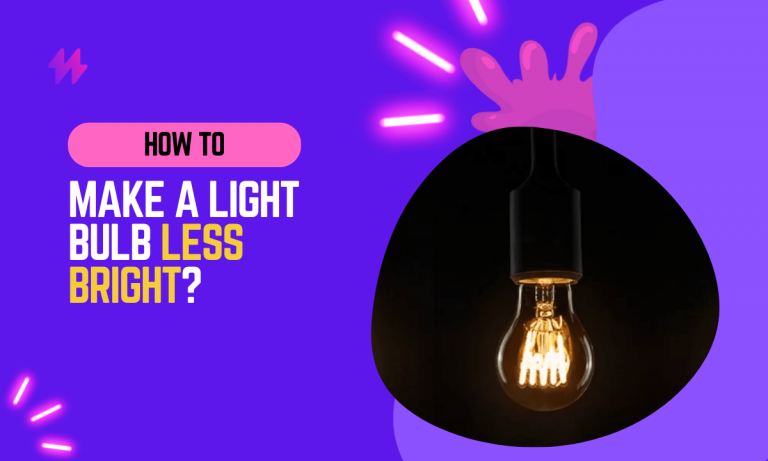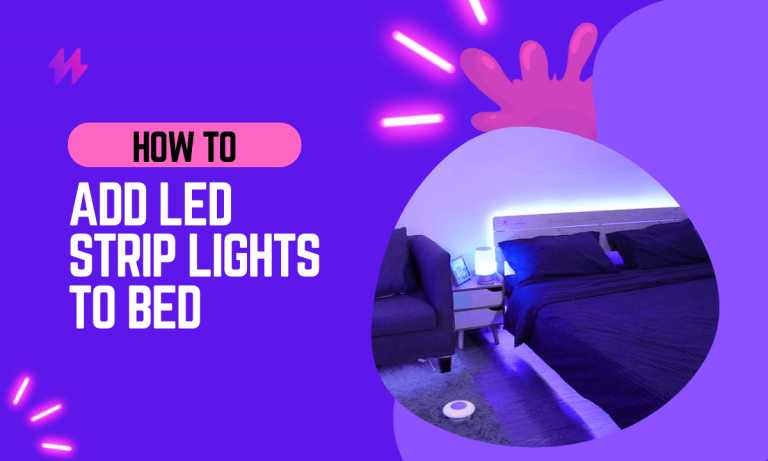Can Plants Grow in LED Light?
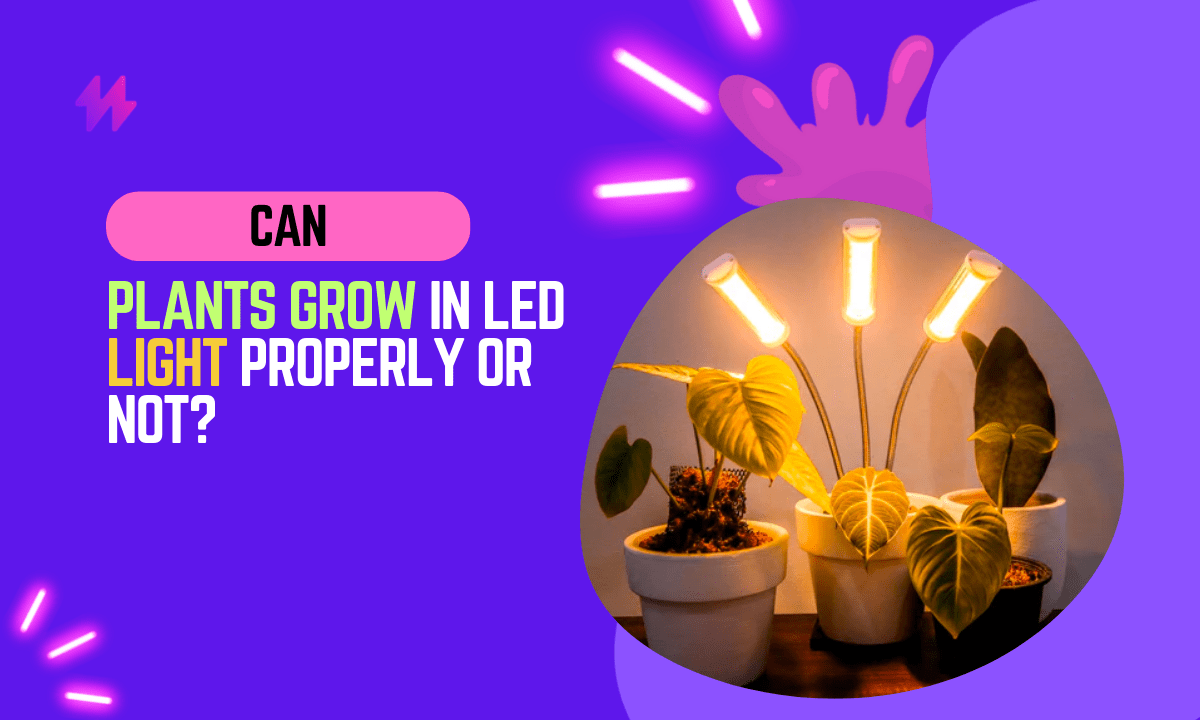
In recent years, LED lights have become increasingly popular as a lighting option for homes and businesses. They are more energy-efficient than traditional incandescent bulbs, and they can last for many years. However, some people are concerned about whether or not LED lights are safe for plants.
In this article, I will discuss the question of whether or not plants can grow in LED light. I will share as an LED light technician with more than a decade of experience, and I will provide you with the information you need to make an informed decision about whether or not LED lights are right for your plants.
LED lights, when used as a grow-light, can effectively support the photosynthesis process in various house plants, provided they emit the right light wavelengths. Although it is generally recognized that natural light is ideal for indoor gardening, understanding the characteristics of artificial lighting can maximize the growth potential of herbs and foliage plants.
Can Plants Grow in LED Light? Understanding the Role of LED Grow Light
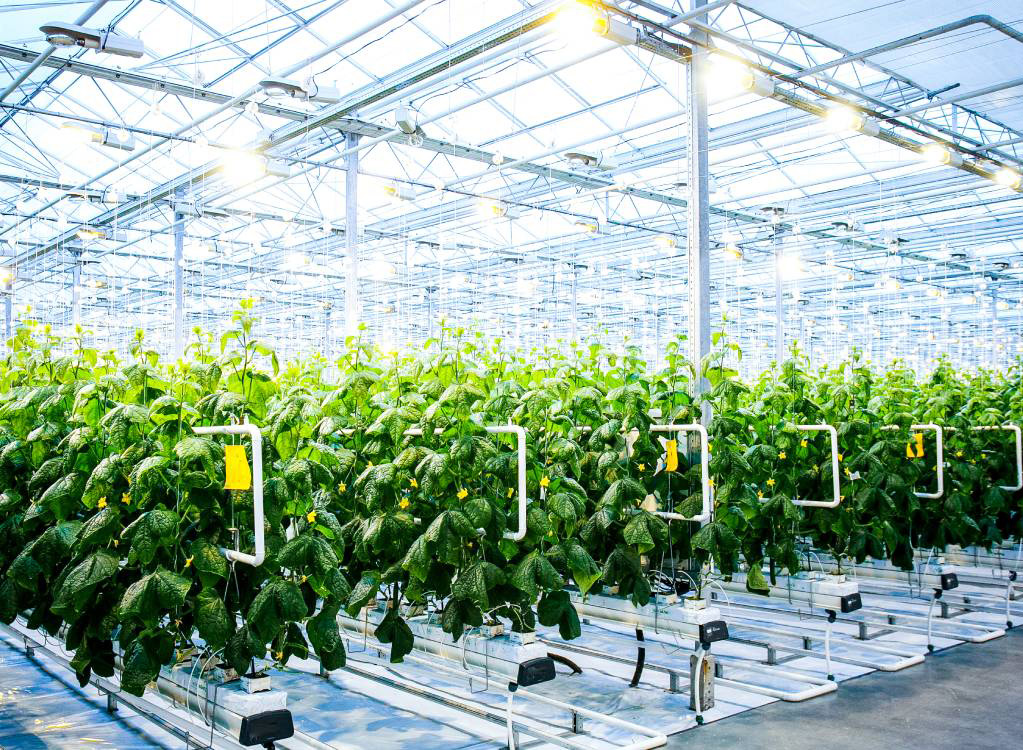
The answer is yes, plants can grow in LED light. However, there are a few things you need to keep in mind to ensure that your plants get the light they need to thrive.
First, you need to make sure that the LED lights you are using are providing the right spectrum of light for your plants. Plants need a combination of red, blue, and green light to grow properly. Most LED lights are designed to emit a specific spectrum of light, so you will need to choose a light that is specifically designed for plants.
Second, you need to make sure that the LED lights are providing enough light intensity for your plants. The amount of light intensity that a plant needs depends on the type of plant, but as a general rule, plants need at least 5000 lux of light to grow properly.
Also read: Which is The Best Light for Plant Growth?
LED lights can provide an efficient grow light option for indoor gardening, as they can emit specific wavelengths essential for photosynthesis. For those interested in growing young plants or low-light plants indoors, utilizing specialized full-spectrum grow-lights can greatly enhance growth and leaf development in a controlled environment.
Choosing the Optimal LED Lights for Your Plants: A Comprehensive Guide
If you are thinking about using LED lights for your plants, there are a few things you need to keep in mind to choose the right lights.
First, you need to ensure that the lights provide the right spectrum of light for your plants. Most LED lights are designed to emit a specific spectrum of light, so you will need to choose a light that is specifically designed for plants.
Second, you need to ensure that the lights provide enough light intensity for your plants. The amount of light intensity that a plant needs depends on the type of plant, but as a general rule, plants need at least 5000 lux of light to grow properly.
Finally, you need to make sure that the lights are durable and long-lasting. LED lights can last for many years, but you should still make sure that you are buying a quality product from a reputable manufacturer.
Check out: Lumen To Watt Calculator: Convert Lumens to Watt
When selecting LED lights for your indoor garden, it’s crucial to understand the unique light requirements of your plants, especially how different wavelengths affects photosynthesis. Incorporating special growth lights that emit sufficient blue light and red light can significantly improve leaf growth and overall plant vitality during various growth stages.
Can LED Lights Provide Sufficient Light for Plant Growth?
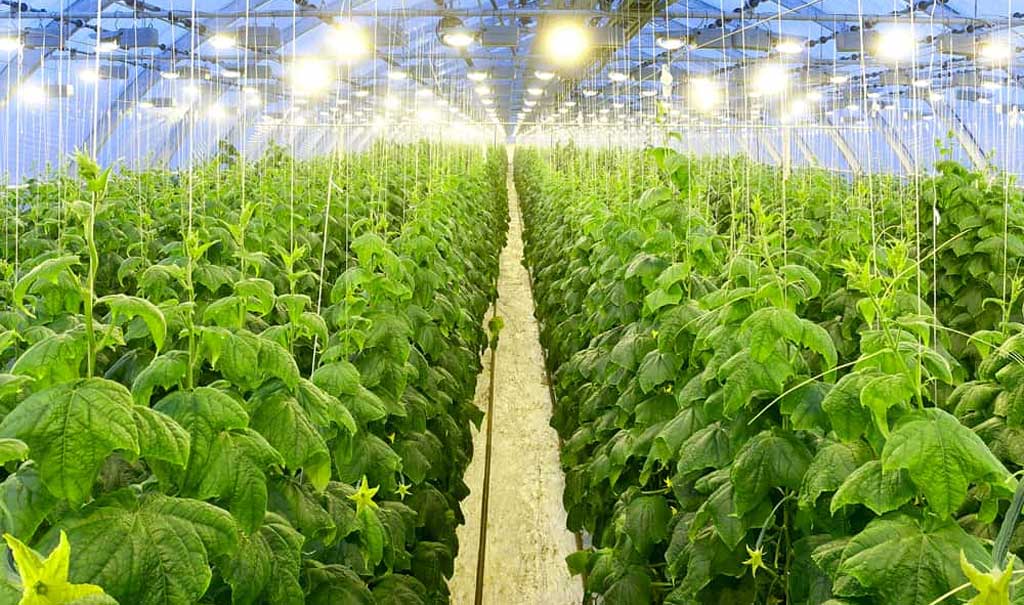
LED lights can provide enough light for plants to grow, but the intensity of the light will need to be adjusted depending on the type of plant and the stage of growth. For example, seedlings will need less light than mature plants, and leafy greens will need less light than flowering plants.
Choosing the right LED bulbs can greatly enhance the light quality for your indoor garden, as they emit specific wavelengths within the visible light spectrum that are beneficial for plant growth. For optimal results, especially in a grow room or greenhouse, consider utilizing full-spectrum light solutions for illumination, ensuring that light aids in photosynthesis and effectively supports your plant specialist endeavors.
Exploring the Advantages of LED Lights for Indoor Plant Growth
There are several benefits to using LED lights for plants, including:
There are several benefits to using LED lights for plants, including enhanced photosynthesis efficiency due to their specific photosynthesis wavelengths, which can combat light deprivation. As indoor gardeners explore the best light sources, they often find that utilizing LED lighting tailored for plants is superior to traditional fluorescent lighting and incandescent lighting options for supporting young seedlings and foliage need.
- Energy efficiency: LED lights are much more energy-efficient than traditional incandescent bulbs, which can save you money on your electricity bill.
- Long lifespan: LED lights have a much longer lifespan than traditional incandescent bulbs, which means you won’t have to replace them as often.
- Durability: LED lights are very durable and can withstand harsh conditions, making them ideal for use in greenhouses or outdoor gardens.
- Controllability: LED lights can be dimmed or brightened to create the ideal lighting conditions for your plants.
- Spectral output: LED lights can be designed to emit a specific spectrum of light, which can be beneficial for certain types of plants.
Exploring the Drawbacks of Using LED Lights for Plants: A Comprehensive Guide
There are a few drawbacks to using LED lights for plants, including:
- Cost: LED lights can be more expensive than traditional incandescent bulbs. However, the long lifespan and energy efficiency of LED lights can offset the initial investment.
- Heat: LED lights can produce a lot of heat, which can be harmful to plants if they are not properly ventilated.
- Blue light: Some LED lights emit a lot of blue light, which can be harmful to plants if they are exposed to it for too long.
Also read: Find the Best Light Bulbs for Indoor Plants
While LED lights offer numerous advantages for indoor gardening, such as tailored light wavelengths that promote the photosynthesis process, they can sometimes emit insufficient light if not chosen carefully. For optimal plant growth, especially for light-deprived plant species, it’s essential to select LED lights that emit the correct light spectrum and brightness, rather than relying on standard lights or regular LED options.
FAQs: Your Questions About LED Lights for Growing Plants Answered
Disadvantages of Using LED Lights for Growing Plants: Understanding the Drawbacks
There are a few disadvantages to plants growing in LED light, including:
When using LED lights as a grow light, it is important to recognize that not all types will support growth equally, particularly when it comes to germination. For instance, while LED strip lights might be convenient, they may not emit the necessary intensity and light spectrum that promotes optimal photosynthesis like traditional fluorescent bulbs known for their effectiveness.
- Cost: LED lights can be more expensive than traditional lights.
- Heat: LED lights can produce a lot of heat, which can be a problem for some plants.
- Size: LED lights can be bulky and difficult to install.
Setting Up LED Lights for Optimal Plant Growth: A How-To Guide
Setting up LED lights for growing plants is relatively simple. Here are the steps involved:
1. Choose the right location for your growing space.
2. Choose the right LED lights for your plants.
3. Install the LED lights.
4. Connect the LED lights to a power source.
5. Set the timer for your lights.
6. Start growing your plants!
Setting up LED lights for growing plants is relatively simple. Here are the steps involved: 1. Choose the right location for your growing space. 2. Choose the right LED lights for your plants. 3. Install the LED lights. 4. Connect the LED lights to a power source. 5. Set the timer for your lights. 6. Start growing your plants! By ensuring that the light output from your LED lights closely mimics the photosynthetically active radiation found in direct sunlight, you can maximize the growth potential of your herbs and vegetables indoors. It’s crucial to select specialized plant light options over utilitarian light sources like regular LED or workshop lights to support your gardening endeavors effectively.
Final Thoughts on Growing Plants with LED Lights
In conclusion, the capability of LED lights to support plant growth has revolutionized the way we approach indoor gardening and commercial agriculture. LEDs offer a range of benefits over traditional growing lights, including lower energy consumption, longer lifespan, and the ability to tailor light spectrums to suit specific plant needs. This adaptability allows gardeners and farmers to optimize conditions for photosynthesis, ultimately enhancing plant health, growth rate, and yields. The specific wavelengths of light emitted by LEDs can be adjusted to target the chlorophyll absorption peaks in plants, which are primarily in the red and blue parts of the spectrum. Such precision not only improves efficiency but also reduces waste, making LED grow lights an environmentally friendly choice.
Moreover, the use of LED lights in growing plants extends beyond mere functionality to enable more sustainable and controlled agricultural practices. With LEDs, it is possible to cultivate plants in areas without sufficient natural sunlight, such as urban environments and regions with long winters. This can lead to reductions in transportation costs and carbon footprints as food can be grown closer to its point of consumption. Additionally, LED grow lights can be used in vertical farming setups, which maximize production space and can be integrated into urban buildings, further contributing to the sustainability of city living. As research continues and technology advances, the potential applications of LED lights in horticulture are expanding, promising not only to meet but to increase the world’s food production needs while simultaneously reducing the resource burden of traditional agriculture.
Can Plants Grow In LED Light | The Science Behind Plant Growth and LED Lighting
Understanding how light impacts plant growth is crucial for anyone interested in indoor gardening or cultivation. Can plants grow in LED light? The answer is yes, as long as the right type of LED lighting is utilized. Unlike fluorescent lights, specific LED grow lights emit photosynthetically active radiation that can significantly stimulate photosynthesis in seeds indoors. While it is not recommended to use a regular LED light or a utilitarian light source, such as a workshop light, full-spectrum LEDs provide a similar light spectrum to direct sunlight and can effectively encourage the germination of herbs and vegetables. The intensity and duration of this light are key factors that influence different growth stages, ensuring that outdoor plants and house plants thrive under conditions with potential light deprivation. Understanding how to optimize light output allows plant education enthusiasts to maximize growth in their house plant shop or home setups.
Can Plants Grow in LED Light | Understanding Photosynthesis and Light Spectrum
Plants rely on light for photosynthesis, a process that enables them to convert light energy into chemical energy. Can plants grow in LED light? The answer lies in how artificial lights, such as LED grow lights, emit specific wavelengths that encourage growth. White light encompasses a combination of colors, including yellow light, which can have varying impacts on different plant species. For instance, intense light can be essential for germination and growth, particularly for herbs and vegetables. With proper light spectrum occurrence, gardeners can enhance seed indoors’ performance under these conditions, even in light deprivation scenarios.
The light spectrum is crucial for plants, as each color plays a unique role in their growth cycle. Red and blue wavelengths are particularly effective in promoting photosynthesis, while white light offers a broader spectrum that indicates brightness. Many plant enthusiasts have turned to workshop lights for cultivating plants indoors, realizing that extra light can significantly improve growth rates. By understanding how different light intensities affect plant health, growers can effectively harness the potential of LED technology. Can plants grow in LED light? Yes, with the right conditions and spectrum, they can thrive.
The Importance of Light Intensity and Duration
Light intensity plays a crucial role in determining how well plants can grow under LED lighting. Can plants grow in LED light if the intensity is too low? The answer is no; insufficient light can hinder growth and even prevent seeds from germinating. A proper plant light setup emits the right brightness, which encourages healthy development of herbs and vegetables. Ensuring that the light intensity is adequate helps plants photosynthesize efficiently and thrive in their growing environment.
Duration of exposure to light is equally important for optimal plant growth. Light deprivation can lead to stunted growth and weak plants. Each type of plant has specific light duration needs; for instance, many herbs and vegetables thrive with 12 to 16 hours of light per day. Maintaining the right balance of light intensity and duration ensures that plants receive the necessary energy to flourish. Understanding these aspects is essential for anyone evaluating whether can plants grow in LED light successfully.
Types of LED Lights for Plant Growth
Choosing the right LED lights can significantly impact the growth of herbs and vegetables. Various types of LED grow lights exist, each designed to meet specific plant needs. Full-spectrum LED grow lights mimic sunlight, providing a balanced range of wavelengths that can encourage plants to germinate and thrive. On the other hand, specific wavelength LED lights target particular colors, optimizing photosynthesis and enhancing growth efficiency. Light deprivation can stifle plant development, making it crucial to select appropriate lighting that can indicate brightness and ensure that plants receive sufficient exposure. This selection raises the question: Can plants grow in LED light? The answer often lies in understanding how different light types affect plant health and growth rates.
FullSpectrum LED Grow Lights
These lighting solutions provide a balanced spectrum that mimics natural sunlight, essential for optimal photosynthesis. Many growers wonder, “Can Plants Grow in LED Light?” The answer is a resounding yes, especially when considering that the right light encourages robust growth in herbs and vegetables. Without sufficient light, plants can experience light deprivation, leading to stunted growth and weak structures.
Full-spectrum options cater to every growth stage of plants, making them particularly versatile. By simulating the full range of sunlight, they ensure that plants can thrive indoors or in controlled environments. This comprehensive illumination allows gardeners to cultivate healthy herbs and vegetables year-round, reinforcing the idea that indeed, “Can Plants Grow in LED Light?” is an important question for anyone interested in indoor gardening.
Specific Wavelength LED Lights
Plants respond uniquely to different wavelengths of light, which is crucial for their growth and development. Specific wavelength LED lights target the precise areas of the light spectrum that enhance photosynthesis. These lights can effectively mitigate light deprivation, making them ideal for growing herbs and vegetables in indoor or shaded environments. The concentrated spectrum can stimulate various growth stages, from seedling to flowering.
Choosing the right wavelength can significantly influence the overall health and yield of plants. Red and blue lights are particularly effective for promoting photosynthesis and growth. By understanding how specific wavelengths interact with plant biology, growers can optimize conditions for various crops. This targeted approach raises the question: Can plants grow in LED light? The answer lies in the careful selection of wavelengths tailored to the needs of specific herbs and vegetables.
Evaluating Plant Response to LED Lighting
Assessing the impact of LED lighting on plant growth reveals significant insights into how well various species respond to this technology. Can plants grow in LED light effectively? This question becomes critical, especially when considering the challenges of light deprivation in indoor gardening. Many herbs and vegetables thrive under full-spectrum and specific wavelength LED lights, showcasing enhanced growth rates and overall health compared to traditional lighting methods. Observations indicate that plants exposed to optimal LED conditions exhibit robust development, reaffirming that LED technology is not just a temporary trend but a viable solution for cultivating plants in controlled environments.
Growth Rates and Plant Health Observations
Observing the growth rates of herbs and vegetables under LED light reveals significant insights into plant health. Many studies have shown that varying light conditions can impact how well plants photosynthesize, leading to differences in growth speed. The question, “Can plants grow in LED light?” is often answered affirmatively when the right spectrum and intensity are applied. Light deprivation can stunt plant growth and reduce overall vigor, underscoring the importance of continuous access to appropriate lighting during crucial growth phases.
Health observations of plants grown under LED lighting frequently highlight the advantages of full-spectrum options. These lights can enhance the coloration and yield of herbs and vegetables, contributing to their robust characteristics. Not only do LED lights support optimal growth, but they also help mitigate issues related to light deprivation, enabling plants to thrive in environments where natural sunlight may be insufficient. This reinforces the notion that, indeed, “Can plants grow in LED light?” is a question that leads to increasingly positive outcomes for gardeners and cultivators alike.
Comparing LED Light Effectiveness with Other Lighting
The debate surrounding light sources for plant growth often points to the efficiency of LED lights compared to traditional methods. Can plants grow in LED light effectively? Research shows that LED lights provide a customizable light spectrum suitable for various plants, including herbs and vegetables. This adaptability allows growers to optimize conditions while minimizing light deprivation, which can hinder growth.
Traditional lighting, such as incandescent or fluorescent bulbs, often emits heat that can stress plants, leading to reduced health and growth rates. LEDs, on the other hand, produce minimal heat, ensuring that plants receive adequate light without the risk of overheating. This characteristic is key in maintaining optimal growing conditions, making LEDs a preferred choice for both amateur and professional cultivators. Can plants grow in LED light? The answer seems to favor LED technology for its effective use in cultivating healthy plants.

